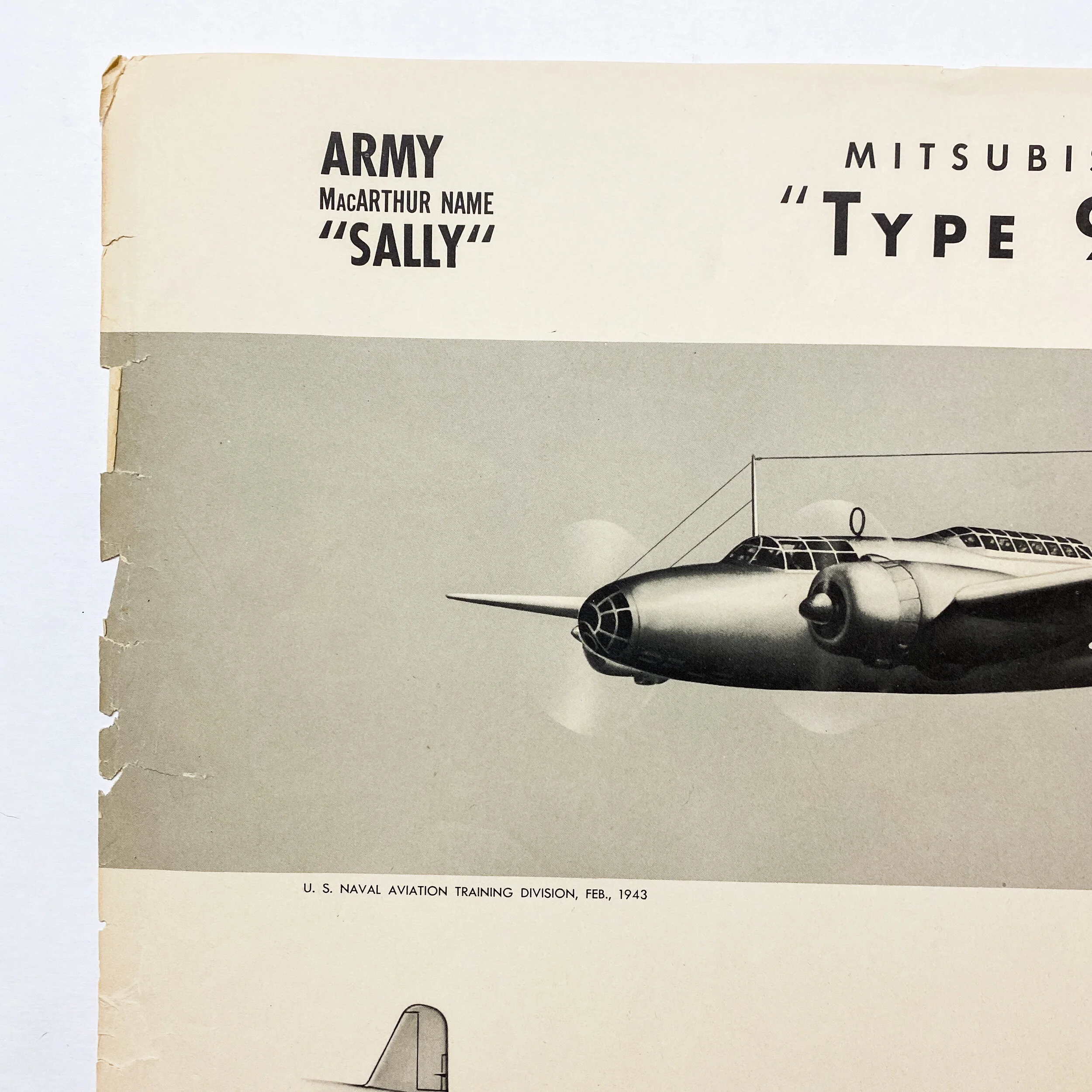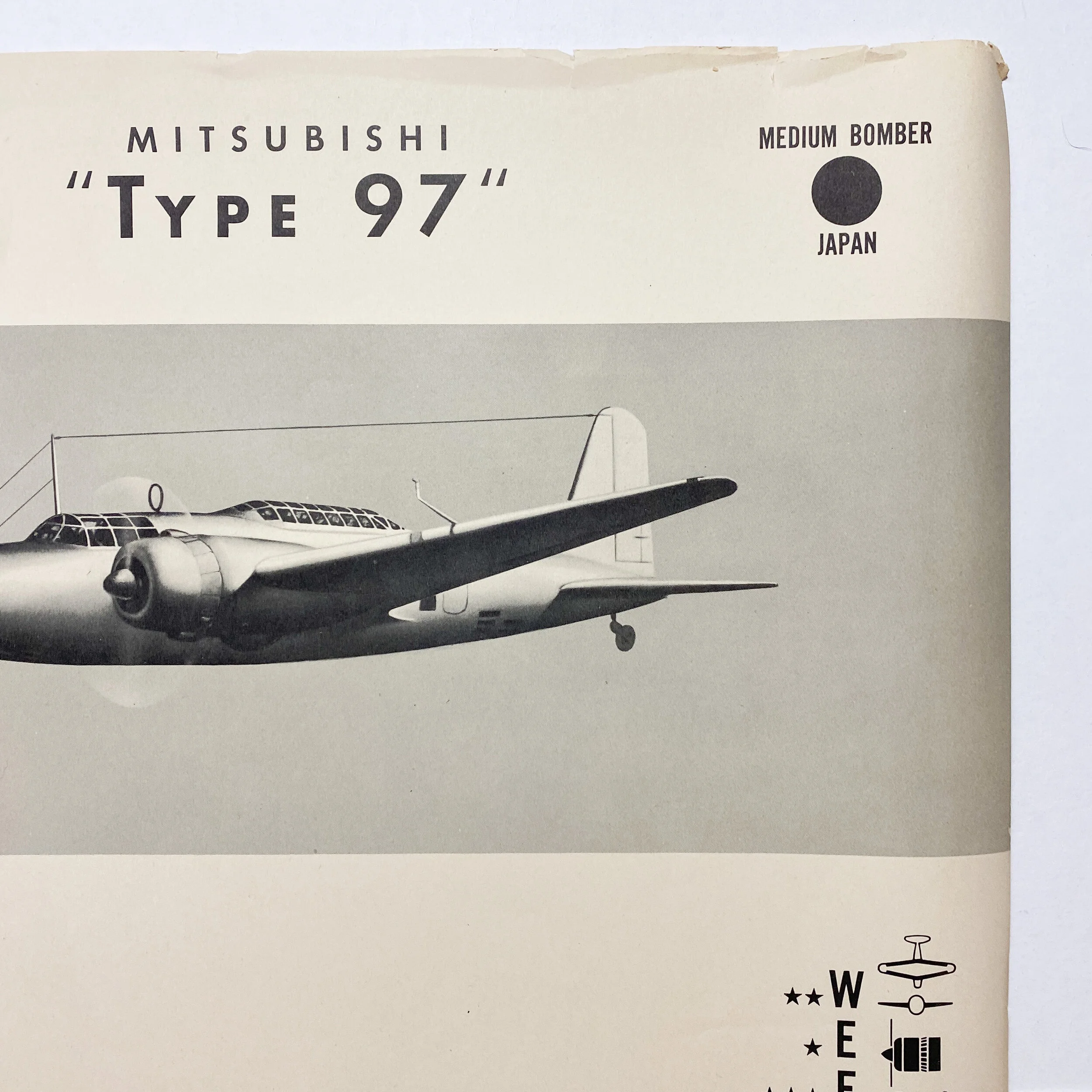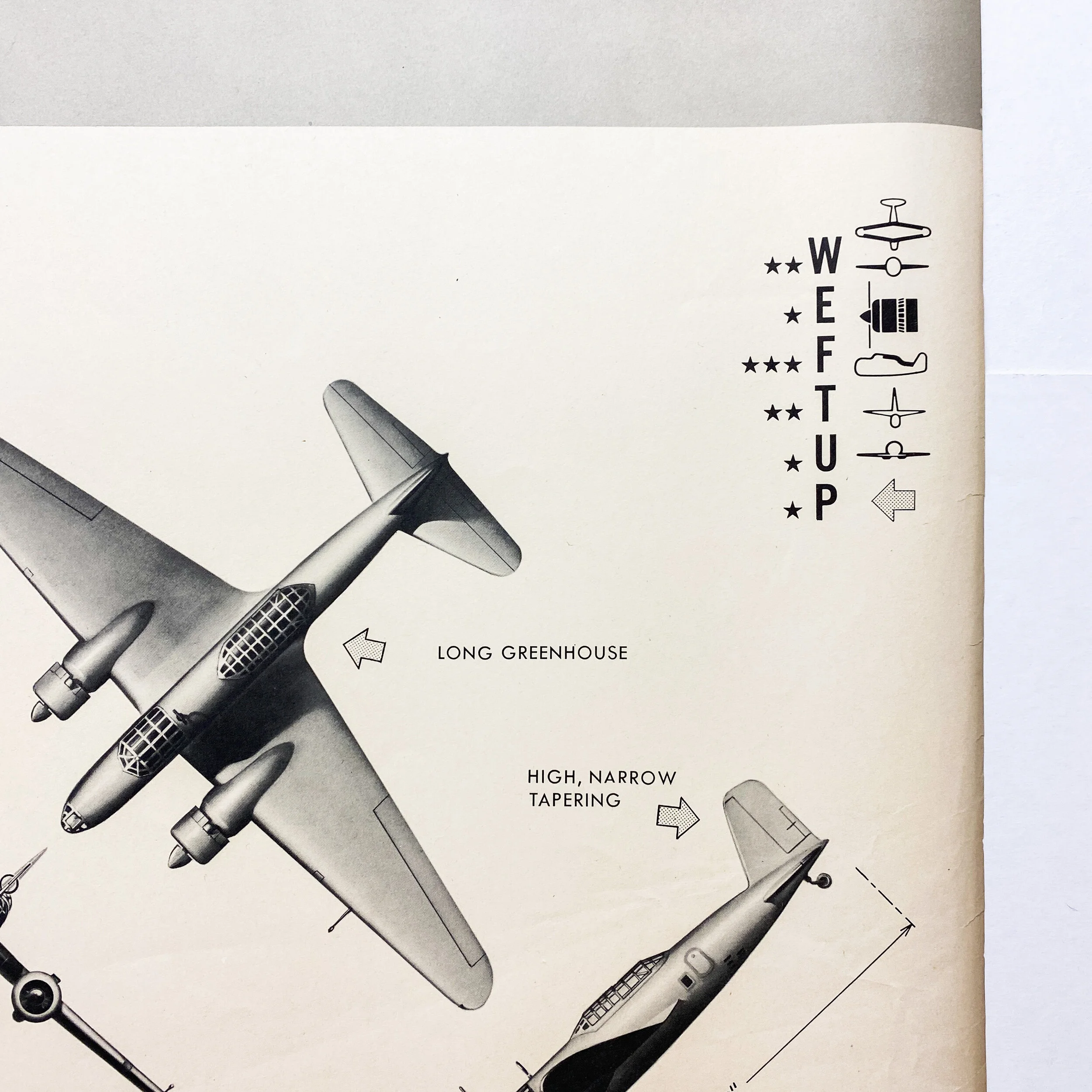Japanese Bomber Mitsubishi Type 97 'Sally' Aviation Training W.E.F.T.U.P. ID Posters









Japanese Bomber Mitsubishi Type 97 'Sally' Aviation Training W.E.F.T.U.P. ID Posters
Size: 19 x 25 inches
This original ‘RESTRICTED’ aircraft identification poster was published by the U.S. Naval Aviation Training Division Feb. of 1943 and was printed by the U.S. Government Printing Office 1944. This poster was posted as a training tool as well as an in theater ID poster to help U.S. and other Allied pilots, bomber crews and Naval personal to identify Allied and enemy aircraft. W.E.F.T.U.P. or Wing, Engine, Fuselage, Tail, Undercarriage, Peculiarities was a system set up for the purpose of aircraft identification and recognition.
World War II saw some of the first introduction of these aircraft ID poster to prevent friendly fire and more accurate plane recognition in combat. It was believed these posters alone could save countless lives from friendly aircraft-on-aircraft or friendly anit-aircraft fire. These posters also could cut down precious second pilots, bomber gunners, and naval gun crews would have to ID a plane flying towards them intern saving their lives by shooting first.
Each poster provides the silhouettes, dimensions, and relevant information to educate both air and ground personnel in aircraft identification. Immediate identification of aircraft, friendly or not, was essential in order for the observer (whether in the air e.g., pilot, gunner, or patrol observer, or on the ground, e.g., anti-aircraft crew) to determine his next course of action (e.g., acknowledge, attack, evade, or report). Each poster details a large clean sky and background image of the specified aircraft located as the main top imagine on the poster. It also contains important ‘peculiarities’ such as where certain gun emplacements are located, other special aircraft features, as well as wing and length measurements.
Japanese Bomber Mitsubishi Type 97:
The Mitsubishi Ki-21 (or "Type 97 Heavy Bomber") (九七式重爆撃機 Kyūnana-shiki jūbakugekiki) (Allied reporting name: "Sally" /"Gwen") was a Japanese heavy bomber during World War II. It began operations during the Second Sino-Japanese War participating in the Nomonhan Incident, and in the first stages of the Pacific War, including the Malayan, Burmese, Dutch East Indies and New Guinea Campaigns. It was also used to attack targets as far-flung as western China, India and northern Australia.
In 1936, Imperial Japanese Army Air Service issued a requirement for a new heavy bomber to replace both the Ki-20 (Army Type 92 Heavy Bomber) and the Ki-1 (Army Type 93 Heavy Bomber).The design called for a crew of at least four, top speed of 400 km/h (250 mph), endurance of at least five hours, and a bombload of 750 kg (1,650 lb). The design parameters were very ambitious, and few twin-engine bombers anywhere in the world could exceed such performance at that time.
Front line units from mid-1940 were equipped with the Ki-21-IIa ("Army Type 97 Heavy Bomber Model 2A") with the more powerful 1,118 kW (1,500 hp) Mitsubishi Ha-101 air-cooled engines and larger horizontal tail surfaces. This became the main version operated by most IJAAF heavy bomber squadrons at the beginning of the Pacific War, and played a major role in many early campaigns. For operations over the Philippines the JAAF's 5th, 14th and 62nd Air Groups, based in Taiwan, attacked American targets at Aparri, Tuguegarao, Vigan and other targets in Luzon on 8 December 1941. The 3rd, 12th, 60th and 98th Air Groups, based in French Indochina, struck British and Australian targets in Thailand and Malaya, bombing Alor Star, Sungai Petani and Butterworth under escort by Nakajima Ki-27 and Ki-43 fighters. However, starting from operations over Burma in December 1941 and early 1942, the Ki-21 began to suffer heavy casualties from Curtiss P-40s and Hawker Hurricanes.
To partially compensate, the IJAAF introduced the Ki-21-IIb, with a pedal-operated upper turret with one 12.7 mm (0.50 in) Type 1 machine gun, redesigned cockpit canopies and increased fuel capacity. Although used in all fronts in the Pacific theater, it became clear by 1942 that the design was rapidly becoming obsolete, and was increasingly shifted away from front-line service.
In spite of its shortcomings, the Ki-21 remained in service until the end of the war, being utilized as transport (along with the civil transport version MC-21), bomber crew and paratrooper trainer, for liaison and communications, special commando and secret missions, and kamikaze operations.
Towards the end of the war, remaining Ki-21s were used by Giretsu Special Forces in strikes against American forces in Okinawa and the Ryūkyū Islands. One of the noted operations was an attack on the Allied-held Yontan airfield and Kadena airfield on the night of 24 May 1945. Twelve Ki-21-IIb's of the Daisan Dokuritsu Hikōtai were dispatched for a strike, each with 14 commandos. Five managed to crash-land on the Yontan airfield. Only one plane landed successfully. The surviving raiders, armed with submachine guns and explosives, then wrought havoc on the supplies and nearby aircraft, destroyed 264,979 L (70,000 gal) of fuel and nine aircraft, and damaged 26 more.